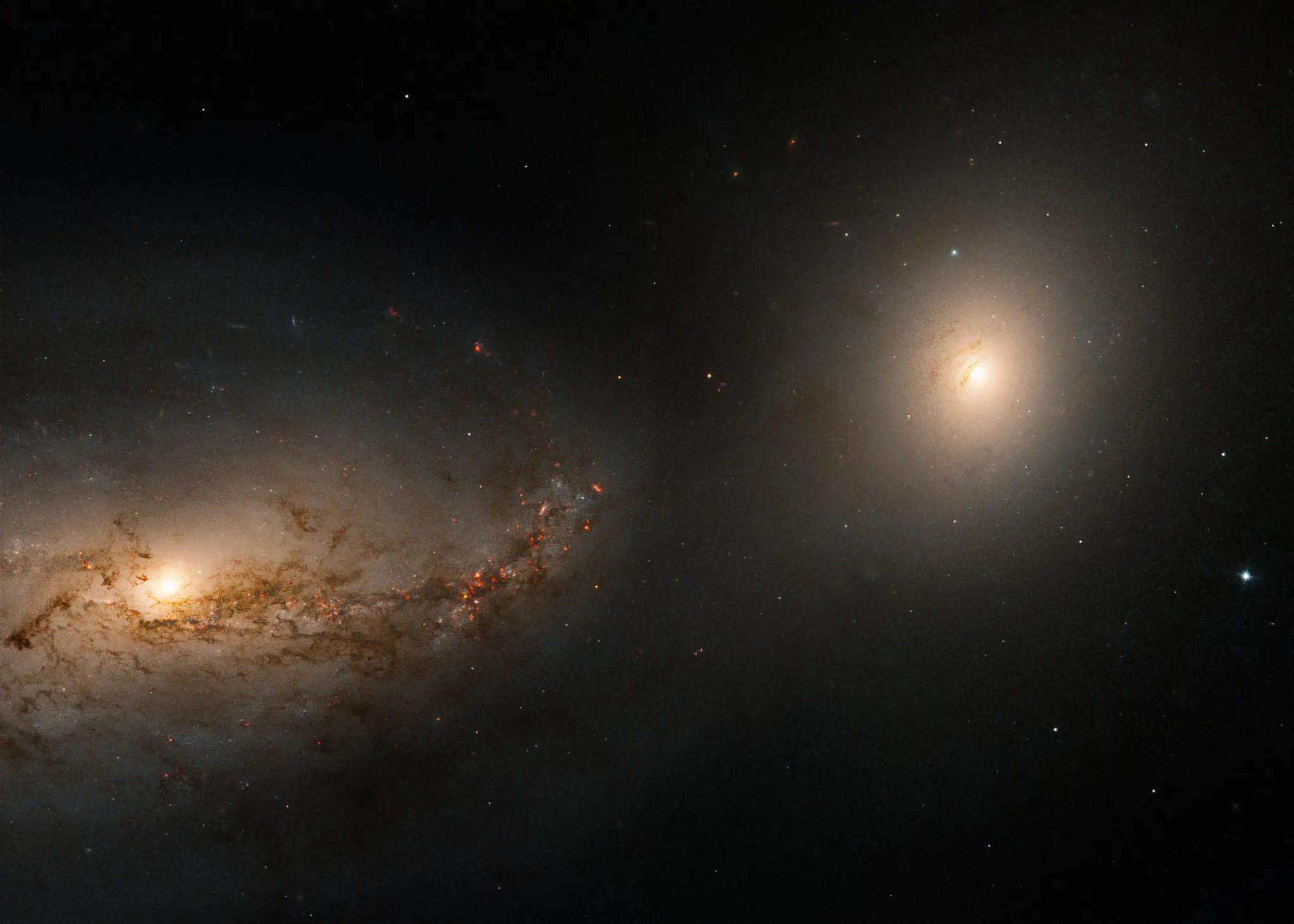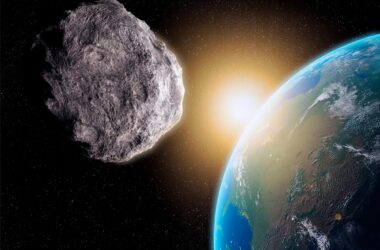
Image du télescope spatial Hubble de la grande galaxie spirale NGC 3227 à gauche et de la galaxie elliptique NGC 3226 à droite. Crédit : NASA, ESA et H. Ford (Université Johns Hopkins) ; traitement des images : G. Kober (NASA Goddard/Université catholique d’Amérique).
Ce ;” data-gt-translate-attributes=”[{” attribute=””>NASA Hubble Space Telescope observation finds the large spiral galaxy, NGC 3227, engaged in a turbulent gravitational dance with its companion, the elliptical galaxy NGC 3226. The twosome – collectively known as Arp 94 – is relatively nearby, between 50 and 60 million light-years away from Earth toward the constellation Leo, the Lion. A close look at the area between the two galaxies, reveals faint tidal streams of gas and dust that link the pair in their gravitational dance.
NGC 3227 is a Seyfert galaxy, a type of galaxy with a very active nucleus. Seyfert galaxies hold supermassive black holes at their cores. As matter spirals into the black hole, it releases vast amounts of radiation along the black hole’s axis of rotation, giving the galaxy its active nucleus.

The upper left, black and white image taken by the Digital Sky Survey (DSS) outlines the portion of NGC 3227 and 3226 that the Hubble Space Telescope imaged. The lower left Hubble image highlights the active core of NGC 3227 and showcases its dark dust lanes and bright star-forming regions. Credit: NASA, ESA, H. Ford (Johns Hopkins University), and DSS; Image Processing: G. Kober (NASA Goddard/Catholic University of America)
Hubble looked at NGC 3227 and 3226 as part of a program to measure black hole masses by observing the dynamics of gas at the centers of bright cluster galaxies. The color red in this image represents both visible red and near-infrared wavelengths of light.
To learn more about this interesting twosome, see: A New Feature in the Evolution of Galaxies.



